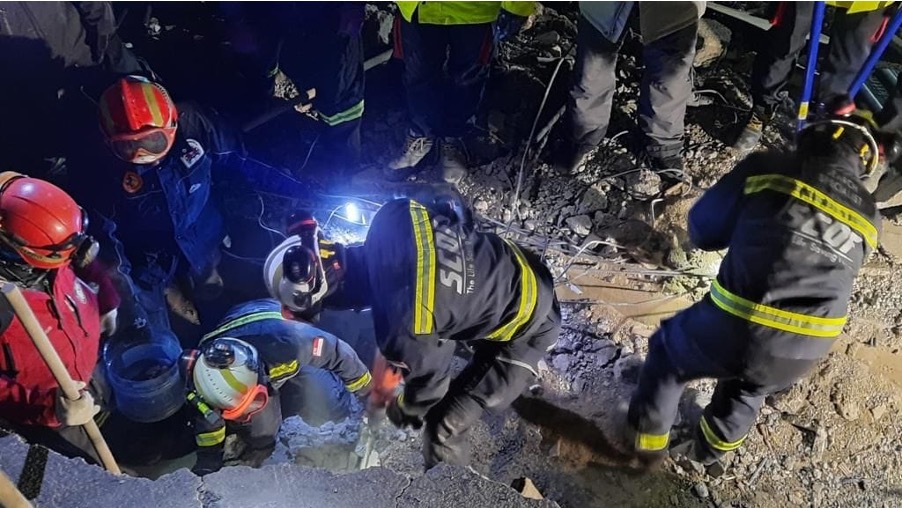It’s been a month since the Singapore Civil Defence Force (SCDF) team flew overseas to take part in rescue efforts following the devastating Turkey-Syria earthquake and four officers are ready to talk about it.
The SCDF published an interview today titled A Lifesaving Mission that Transcends Borders with four out of the 68 Operation Lionheart contingent (plus some well-trained canines) recounting the heroic rescues of a boy and a man during their 10-day deployment in Adana, Turkey.
The Feb. 6 disaster reportedly claimed at least 45,000 lives so far.
The interviewees were Lieutenant Abdul Rashid Bin Abdul Karim, 1st Warrant Officer Fendilato Bin Mohamad Tahir, 1st Warrant Officer Muhammad Faris Bin Mohammad and Third Sergeant Tamimi Bin Mohamad Mamsi.
Rescue #1
The contingent rescued a boy from a collapsed 3-story building on Feb. 8.
Abdul Rashid recounted that the team received information about a family of eight trapped on the second floor of a building. Only two had been rescued so the team swooped in immediately.
He said that rescuers could hear voices from beneath the rubble but were unable to locate them so the team whipped out their fiber-optic scope that helped detect signs of life deep within the rubble.
That’s when they saw a carpet moving and Tamimi said they started using their breaking equipment to gain access to a small entry point.
“Equipped with a headlamp and a handheld light, I entered the void, leg first. After clearing some debris, I found a boy intertwined in a carpet and mattress,” Tamimi said.
The boy, who had a faint pulse, initially did not respond but suddenly opened his eyes and “eagerly crawled out” when the exit was widened, Tamimi added.
Abdul Rashid said that trying to maneuver through the rubble was “challenging” as they came across large obstacles like pipes, furniture and even refrigerators. They also had to be extra careful when removing them to avoid a secondary collapse.
Rescue #2
As for the second successful rescue of a man from a 2-storey building the day after, Muhammad Faris said their nifty fibre-optic scope played a part as well.
They received word that there was a victim trapped behind a wall so they used the scope while calling out for a response, which Fendilato said they spent “quite some time” doing.
Finally, they spotted the man through the scope and proceeded to rescue him from the rubble.
“When we saw the man in our scope, he responded by turning his head and we could see his eyes very clearly. We were ecstatic!” Muhammad Faris said.
He added that they teamed up with the Turkish rescuers and extricated the man in two hours.
Safety First
Fendilato said while saving victims was a priority, their own safety had to be accounted for so they maintained constant contact with the team.
“I was squeezing myself through the tiniest space imaginable! When I attempted to manipulate the lens handle of the scope, fragments of concrete crumbled onto my face,” he said.
“Sure, there were risks, but they were minimised with the proper precautions taken during the rescue and always ensuring the safety of the team,” he added.
Abdul Rashid made sure to minimize the number of people surrounding the rescue site to prevent overcrowding and keep exit points clear at all times just in case.
He called the operation “one of the most dangerous places” he worked in.
“Imagine being in a small, dark room with a wall inclined at a 45-degree angle above your head, with the possibility of collapse,” he said.
“I knew that we had to work quickly, but safely,” he added.
Fendilato closed off the interview by sharing words of inspiration he learned from Lieutenant Mohamed Nazim Bin Kudin, “We were not here to compete with others or to make a name for ourselves. We were here to do our best to help those in need.”
SCDF teased the second part of the interview with the operation’s Contingent Commander, Colonel Chew Keng Tok and its psychologists.
Other stories you should check out:




